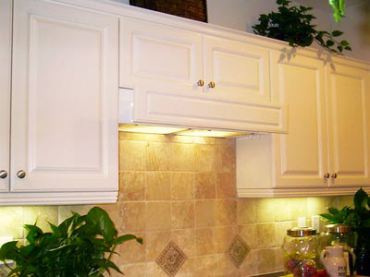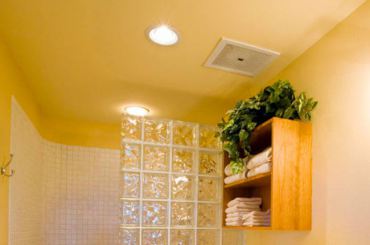
Most homeowners have a hate-hate relationship with their exhaust fans, be it the one in the bathroom or the one in the kitchen, and as a result they are seldom used.
Exhaust fans are designed to remove moisture, grease and particulates from your home, thus preventing these substances from adhering to your walls, cabinetry and furnishings, as well as being breathed in by the home’s occupants. If the fans are not used, you can experience moisture-related issues such as mold, higher maintenance requirements and lower material life (for paint, wallpaper, cabinetry and furnishings), not to mention respiratory issues for occupants.
Homeowner’s complaints about exhaust fans can generally be lumped into two categories: “It is too noisy” and “It doesn’t work.” The first reason tends to be more valid than the second.
Noisy fans can be blamed on a variety of factors.
The first factor may be age: Older fans were generally not well constructed and, unlike wine or cheese, age is not kind to them.

Second, improper installation will make a fan noisy. The less elbows and the shorter the duct run from the fan to the exterior of the home, the less friction will be generated and hence, less noise. When building or remodeling, always aim for the shortest duct runs possible.
Thirdly, improperly joined ducts or size transition between duct runs will cause vibration and hence noise.
Many manufacturers have worked on making fans of all types much, much quieter and more efficient. So if noise is your biggest complaint, consider changing out your fan and checking your ducting connections.
If inefficiency is your fan’s issue, you may need to realign your expectations. If you wait until the steam is billowing out of the shower or out of the pasta pot before you turn on the fan, you are not giving the fan an actual opportunity to do its job.
It is best to turn on your bathroom fan at least 10 minutes before you start the water in your shower or bath and the same is true for your kitchen fan — turn it on before you even fill the pasta pot with water. By the time the steam starts billowing up, the fan has had an opportunity to get the air in the room moving and will evacuate the steam with ease.
It is important to size a fan to both the tasks at hand and the room. If your bathroom is more than 100 square feet, it is best to have two fans with a motor designed to move 50 cubic feet per minute (CFM) of air at the very minimum.
There are two criteria to sizing a kitchen exhaust fan: First is the size of the range, stove or cooktop. The exhaust fan should be at least the width and often the depth of the cooking surface.
If the cooking surface is in an island, the capture area of the exhaust fan should be larger to compensate for the fact that the fan will be drawing air from an open space. Second is the amount of wattage (think electric range or cooktop) or BTUs (think gas stove or cooktop) output from the cooking equipment. The higher the wattage/BTUs, the greater the CFM the exhaust fan motor should be able to move.
There are many types and features to consider when selecting either a bathroom fan or a kitchen fan. To ensure you are selecting one that will get the job done right and quietly, consider consulting with a design-build professional.

























